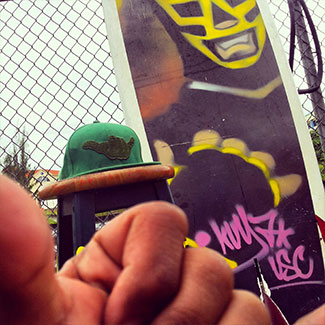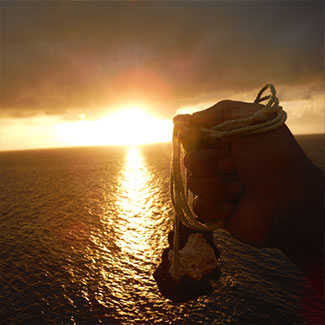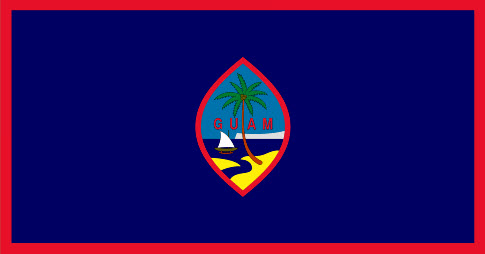Sherdog’s2009StoryOfTheYear
January 16, 2010 by admin
Filed under GlobalGuamMMA, Special Forces
StrikeForce:TheLifeAndTimesOfFuryMadness
Sherdog’s2009StoryOfTheYear:For the last few years, it has been debatable if any U.S. fight promotion truly had the merit to call itself the No. 2 organization behind the UFC other than by default.
That changed in 2009, as a regional outfit named Strikeforce matured from a four-show-a-year operation to a double-digit, major network-broadcasted promotion.
For its staggering growth, which included cable and network TV deals, as well as the signing of the world’s most coveted fighter, the rise of Strikeforce has been voted Sherdog.com’s 2009 Story of the Year.
It began on Feb. 5, when Strikeforce and the Showtime Network jointly announced that they’d reached a three-year broadcast deal for up to 30 events, with an option for Showtime’s parent company, CBS, to pick up four primetime shows at its discretion.
CBS had been shopping for another MMA partnership since Pro Elite, which promoted 20 EliteXC and ShoXC events, had closed its doors the previous October buried in $55 million dollars of debt. Three EliteXC events had generated enough heat for CBS in 2008 to whet its appetite for similar content. Talks between CBS and Strikeforce began quietly that December, and the promotion is said to have been selected over other established outlets like King of the Cage and the UFC, which had met multiple times with the broadcast network as well.
Owned by Silicon Sports and Entertainment and 20-year-plus kickboxing promoter Scott Coker, Strikeforce had held California’s first regulated MMA event in March 2006 to a record 18,000-plus attendance. By keeping overhead costs low and catering to its sports-hungry San Jose, Calif., market, Strikeforce had a reputation for turning profit, something not easily obtained in the industry.
Terms of the deal included Strikeforce’s $3 million dollar purchase of select assets of Pro Elite Inc. — of which Showtime owned 20 percent — including the company’s fight library and inventories, as well as promotional and marketing materials. Most importantly, Strikeforce was given access to nearly 150 EliteXC fighter contracts.
Strikeforce CEO Coker said he and his staff reviewed the contracts carefully, noting which fighters might complement their existing roster.
“Out of those 140 to 150 contracts on file, I would say 75 to maybe 90 of those guys were from the smaller (ShoXC) league,” said Coker. “We thought it wouldn’t be hard to re-create some of those fights for Showtime and build guys that we wanted to build, so two-thirds of those contracts went away because of that.”
EliteXC champions Jake Shields, Robbie Lawler, standout Nick Diaz and others had their existing deals optioned immediately. Coker scrutinized the remaining contracts.
“[We Asked] Is this somebody that can become a star, a journeyman, a superstar in sport, and how do they currently match up against the fighters that we currently have?” said Coker.
Showtime aired its first Strikeforce event that April anchored by a middleweight tussle between Strikeforce attraction Frank Shamrock and Diaz.
While some questioned if the contracts were legally transferable, Gina Carano, a star on NBC’s “American Gladiators” and a massive draw who’d made no more than $25,000 a fight during her EliteXC tenure, took a seat at the re-negotiation table with Coker. Coker pursued “the Face of Women’s MMA,” who’d also met with the UFC — which doesn’t have a women’s division — just one day before Strikeforce’s Pro Elite asset purchase. Coker signed Carano to a six-figure contract a few months later.
“In 2006, we did the first regulated women’s bout in the state of California between Gina Carano and Elaina Maxwell,” said Coker. “It was an amazing fight, a standing ovation. I’ve always believed in female MMA fights, and it was personal goal for me to get Gina back in the cage with Strikeforce. She’s a star.”
Coker promoted the first female-headlined major U.S. event ever on Aug. 15 in San Jose, Calif., where Cristiane “Cyborg” Santos iced Carano in the first round to take the promotion’s 145-pound title. Coker continues to bolster the promotion’s female ranks and has 135- and 145-pound eight-women tournaments planned for mid 2010. Promoting women’s MMA distinguishes Strikeforce from other top promotions worldwide, though Coker said that’s not the reason he does it.
“I always believed in female martial arts fighting,” said Coker. “To me, there hasn’t been a concentrated effort to say, ‘Well, we should do this because these other companies don’t do it.’”
Of all the A-list candidates at Coker’s disposal in the EliteXC purchase, Internet backyard brawling sensation-turned-fighter Kevin “Kimbo Slice” Ferguson was the lone high-profile fighter whose contract wasn’t optioned. Slice had done CBS’s best numbers, but was an MMA novice.
“We had the opportunity to pick him up, and at that point, we looked at our roster of heavyweights who could fight him,” said Coker. “We just didn’t think there was anybody that would match up well with him… Alistair Overeem vs. Kimbo? At the time Paul (Buentello) vs. Kimbo? Antonio Silva vs. Kimbo? Fabricio (Werdum) vs. Kimbo? I just thought all of those fights wouldn’t be competitive and that was the real issue behind it.”
Coker also questioned if Slice’s hefty EliteXC price tag would be worth it.
“Is he a 21-year-old potential who has a tremendous amount of an upside or is he a short-term solution when we’re really in this for the long distance race?” asked Coker. “I saw EliteXC walk on eggshells trying to match Kimbo… did we really want to be in that situation where we were walking on eggshells to match someone? We just didn’t want to do it.”
Slice parted ways with Strikeforce in August and was signed days later to appear on Spike TV’s “The Ultimate Fighter 10.” Slice’s inclusion in a house of UFC hopefuls brought in record-breaking ratings for the cable network, while the 35-year-old fighter’s December victory against Houston Alexander live on Spike banked over 5 million viewers as well.
Still, Coker doesn’t regret his decision.
“For his last fight, I think he’s fighting a guy that’s a weight class underneath him and they’ll always be looking for the right match to make sure he has the best advantage that he can have,” said Coker. “I’m sure we could have done the same thing, but we didn’t want to.”
Sans Slice, Coker made strong in-roads with the Japanese market to secure additional high-wattage talent. In early August, Coker announced a strategic talent-exchange alliance with Dream, one offshoot of the once great Pride Fighting Championships. Dream fighter Mitsuhiro Ishida graced the Strikeforce cage in mid August, and Coker’s flexibility with non-exclusive contracts has allowed the promotion to tap into talent like Jason “Mayhem” Miller and Muhammed “King Mo” Lawal, who both compete regularly on the Japanese circuit. Coker has grander plans for the partnership as well.
“The goal is to do a fight in Japan with Dream and have the best Strikeforce fighters fight the best Dream fighters and then maybe do another fight in America where they’re best would come fight our best,” said Coker. “It would be similar to the WBC guys fighting the WBA guys. We have a tremendous roster that’s improving every day and Dream has an amazing roster. To me, these guys need to fight each other. These fights should happen. In boxing, these fights happen all the time, so why can’t they happen in MMA?”
In August, another door opened when struggling promotion Affliction Entertainment cancelled its Aug. 1 event two weeks out, leaving a cast of 20 fighters jobless. The world’s No. 1 heavyweight, Fedor Emelianenko, was among the castaways and he was suddenly a free agent. As closed-door negotiations with the UFC soured, stalled primarily on the UFC’s unwillingness to co-promote with Emelianenko’s M-1 Global management, Coker flew to Los Angeles to meet with the Russian company as well to try and strike a deal.
Coker called the three-day negotiations, held in a hotel lobby and conference room in Irvine, Calif., last August “organic.” Not in the U.S. at the time, Emelianenko was represented at the meetings by M-1 Global’s Vadim Finkelchtein, Joost Raimond, Apy Etcheld and Jerry Millen.
A co-promotional agreement was reached for four Emelianenko-headlined events, with an option for additional shows beyond that.
Six weeks later and not by coincidence, CBS exercised its option to broadcast its first Strikeforce event on Nov. 7 from the Sears Centre in Hoffman Estates, Ill.
“At that time, I had no idea how much (signing Emelianenko) would change the landscape of our company,” said Coker. “I’m so happy that we did it because it’s just such a great relationship. I’m so glad we pulled the trigger on that.”
Emelianenko’s tense two-rounder against Rogers netted strong ratings for the network. The bout was seen by nearly 5.5 million viewers, and became the ninth most-watched live bout in U.S. MMA history. CBS will air its second Strikeforce event in April, with Emelianenko likely at the helm again.
In December, Strikeforce scored another coup in the signing of the year’s second high-profile free agent, former UFC contender Dan Henderson, to a four-fight, 16-month deal. At first, Coker didn’t believe he had a shot at the two-time Olympic wrestler and dual-division Pride titleholder.
“I thought Dan was shopping around, but that he was really going to go back and sign with the UFC,” admits Coker. “We had lunch and some informal meetings, but it really wasn’t until I got a call from his manager saying, ‘Yeah, we want to be with Strikeforce. We don’t want to go back to the UFC. We’re ready to make a deal.’”
Henderson, who makes his debut for Strikeforce on CBS in April, is the first top 5-ranked fighter to jump from the UFC to Strikeforce. Coker doesn’t believe Henderson will be the last either.
“It’s a message to the fighters that there’s another alternative out there,” said Coker.
Possibly the promotion’s only black eye in 2009 was its inability to corral its heavyweight champion, Dutch striker Alistair Overeem, into a title defense since winning it in November 2007. Overeem, 29, was twice scheduled to put his crown on the line against Rogers and then Werdum, but withdrew both times with a hand injury. Instead, the former light heavyweight enjoyed a healthy run in Japan, competing in K-1’s year-end tournament and for the Dream promotion. Coker’s patience may come to an end in the new year.
“We always knew the fall was going to be busy with his K-1 schedule because that’s the way his contract was put together, but I want to make it clear that with Alistair we have a direct contract and his team have told me that he’ll be ready to fight in the second quarter (of 2010),” said Coker. “We’re going to hold him to it.
Overeem’s return will be much welcome, as a heavyweight contender’s bout looms between Emelianenko and Werdum, possibly in April on CBS.
In addition, a distribution deal with Shine International, which represents “The Biggest Loser” and other hit programming in over 150 countries, has already yielded soon-to-be-announced deals on Bravo TV in the UK, Latin America and Australia, which will provide a widened revenue stream.
Strikeforce also struck a licensing agreement with video game juggernaut EA Sports in the latter part of 2009 and will be the “premier” fight organization featured in its EA Sports MMA game due out later this year.
With 16 Showtime and four CBS-broadcasted events slated for 2010, on all fronts, Strikeforce’s future looks bright.









Comments
a penny for your two cents
and oh, if you want a pic to show with your comment, go get a gravatar!